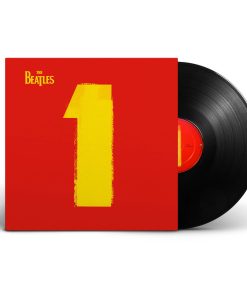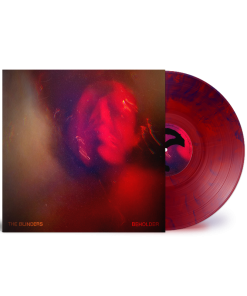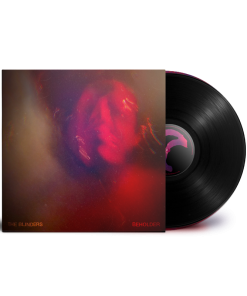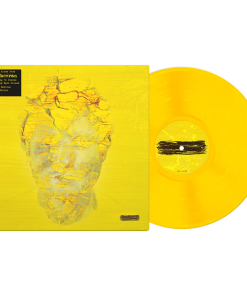Few Traces: Vinyl 2LP Mark Renner
$ 24,99 $ 14,99
Few Traces surveys a near decade of Mark Renner’s scarcely released and unreleased material from 1982 to 1990, embracing and evoking the timelessness of his artistic statement: a wordless translation of the individual’s musical experience, met with the poetic expression of being here.
Mark Renner first encountered punk while a teenager in Upperco, a country town in rural Maryland. Growing up on his family farm, he became a young acolyte of the British exports hitting not-so-distant Baltimore record store shelves in 1979 / 1980 and was baited by an area musician-wanted ad declaring Ultravox a primary touchstone.
This nascent band and a pair of other group experiments flamed out under the typical totem of despotism. In their ashes Renner began recording independently around 1983 with a portable four-track, electric guitar, and classic Casio CZ101 synthesizer. Aside from John Foxx-era Ultravox, Renner’s process was inspired by the period’s electronic pioneers venturing into deeper, romantic pop pastures: Yellow Magic Orchestra, Bill Nelson, The Associates.
With his tools and teachers in place, the blueprints for Renner’s sound were laid out – metronomic, skeletal rhythms built on sturdy yet singular drum machines supporting luminescent guitar and synth lines, Renner’s reverent voice guiding the fables and construction.
Most directly influential, Renner’s enthusiasm for Days in Europa, the third album by Scottish new wave band Skids, would lead to a correspondence and long-distance tutorship with Stuart Adamson. Before Adamson would achieve worldwide success co-founding the group Big Country, a chance friendship with Renner would impart great confidence in the young musician from Maryland, who, after a visit in Edinburgh, would then travel to London to demo an early version of “Half A Heart” featured in its final form on Few Traces.
The sum of Renner’s music is one-part literary, one-part painterly. The artist cites the individualism of Herman Hesse as a guiding force, and there are overt references to W. B. Yeats and John Greanleaf Whittier among other authors. Lyrical themes evoke the presence of the ancient past, much like early Felt songs or the spiritual visions of Van Morrison. (Tellingly, Renner cites Morrison’s 1980s albums made between Inarticulate Speech of the Heart and No Guru, No Method, No Teacher as musical influences.)
Apart from his writing, Renner explored music as a complement to visual language: many of the dream-like instrumental passages presented across Few Traces were originally implemented as sound elements for exhibitions of his paintings. Renner pursued wordless music as a pure aesthetic in its own right, pristinely balanced segues and open-ended compositions that lead to pasture but not without shepherd.
Compiled three decades after the music was originally put to tape, Few Traces collects Mark Renner’s early music but strives not to simplify or reframe it. (Mark is still active making music and painting) The instrumental explorations remain on par with the great ambient adventurers of the period (Brian Eno, Harold Budd, Roedelius), while the vocal and guitar-centric songs crystalize across similar terrains being transversed by Cocteau Twins and The Chills.
Few Traces highlights in intuitive sequence gems from Renner’s scarce discography and archive: the self-released debut All Walks of This Life (1986), the aptly titled follow-up Painter’s Joy (1988), plus early singles, compilation tracks, and exemplary songs that saw no original release. The collection allows an intimate look at an artist growing into their sound and surroundings, finding the in between echoes and spirituality of the individual.
Fast Delivery and Professional Packaging
Our long-standing relationship with UPS FedEx DHL and other carriers around the world gives us the ability to provide various shipping options. Our warehouse personnel will pack all goods to our exacting requirements. Your goods will go through an extensive inspection and will be securely secured prior to being shipped. Every day we ship thousands of packages to clients from all over the world. This is a sign of our determination to be the largest online retailer in the world. There are distribution centers and warehouses in Europe and the USA.
Orders that contain more than 1 item are assigned processing periods in accordance with the item.
Prior to shipment, all purchased items will be thoroughly inspected. The majority of orders are shipped within 48 hrs. Delivery is expected to take between 3 and 7 days.
Returns
The stock is dynamic and we do not completely manage it because multiple parties are involved, which includes our factory and warehouse. The actual stock can fluctuate at any time. It's possible that the stock may run out after your order has been processed.
Our policy lasts for 30 days. Unfortunately, if thirty days have passed from the date you purchased the item, we will not be able to offer you a return or exchange.
The item should not be used, and it must be in the original packaging. The item should be in the original packaging.
Related products
Vinyl LP
Vinyl LP
Vinyl LP
Vinyl LP
Vinyl LP
Vinyl LP
Vinyl LP
Vinyl LP
Vinyl LP








































